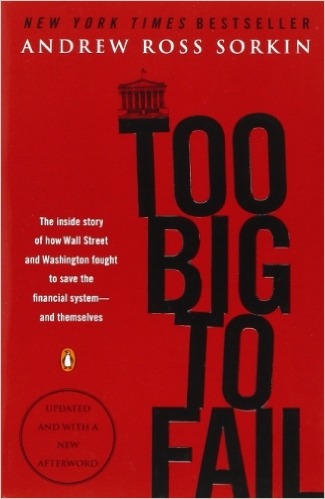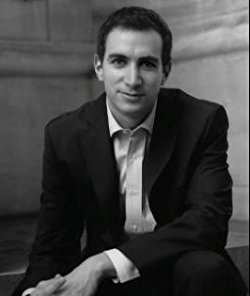Too Big to Fail Summary

5 min read ⌚
 The Inside Story of How Wall Street and Washington Fought to Save the Financial System–and Themselves
The Inside Story of How Wall Street and Washington Fought to Save the Financial System–and Themselves
Are you afraid of failure? – Well, you shouldn’t be if you have all the rightful tools.
This is a book for experts, a real step-by-step guide, and analyses of how Paulson, Geithner, Dimon, and Fuld managed to navigate the collapse of 2008.
Who Should Read “Too Big to Fail”? And Why?
This book comes as a blessing to those eager to discover what brought Wall Street to its knees in 2008.
If you think highly of yourself, perhaps “Too Big to Fail” will assist you in your way to become an all-around leader. Wall Street and the worldly economy rely so much on shares, transfer of shares, equity shares, and allocation of capital.
These things had always been a subject to numerous arguments, unlike other straightforward matters. our book summary has a task to awaken that entrepreneurial spirit in every individual, and eventually produce “Winners”.
About Andrew Ross Sorkin
 Andrew Ross Sorkin was born on February 19th, 1977 in New York City.
Andrew Ross Sorkin was born on February 19th, 1977 in New York City.
He earned his bachelor degree from Cornell University. Andrew is a journalist, author, and a financial analyst, who currently works for The New York Times as an acquisitions reporter and columnist.
It’s also important to mention that he is the founder of DealBook.
“Too Big to Fail Summary”
Despite the Wall Street precautions, the U.S. economy experienced once again a financial “predicament”. Although this wasn’t the first time, September 2008 will remain carved deep into Wall Street history.
Unlike other types of crisis, this one emerged from nowhere. Wall Street had no other choice than to try and confront the calamitous collapse, in order to protect its shareholders.
First things first, let’s reveal what got the better of Wall Street.
2007 was great for investors, and shareholders, if we take into consideration $53 billion “facts” – earned in the previous 12 months. The compensation was motivation enough to proceed with the same strategy. Lloyd C. Blankfein, who was a Goldman Sachs CEO made a breath-taking $68 million only for himself.
Soon after the excitement, the inflated real estate market took a quick turn in the other direction leading to a full collapse. Generally speaking, Wall Street began to go back and forth without stopping.
Even though the debt-to-capital ratio reached a point of being 32 to 1, the marked couldn’t stand the fluctuations. According to experienced stockbrokers, this ratio “guarantees” profits even in boom times, but that was not the case here.
JPMorgan Chase stunned the people with his phrase – said on March 17, 2008 – I would rescue Bear Stearns, even in a fire-sale deal” A quote well-remembered.
Companies were on the brink of failure, all struggling to attract investors, that will ultimately improve their current situation. Quickly it became evident that trading partners and other potential investors cherished a cautious approach, sometimes referred as leery.
The stock market plunged instantly, and all of a sudden, everything changed. Investors were skittish, afraid of losing their capital, so they observed the “Stock-Swing” uninterested in conducting any financial activities of uncalculated risk. This shortage of transactions led to a 48% drop in shares value, in just an hour of trading.
One thing led to another, and “Too Big to Fail” was written, to indicate that nothing is unchangeable. Even great corporations experienced failures and rose from the ashes.
A perfect example is a collapse known as the “Great Depression” in the 30s. During the 2000s books about finances continued to pile up, you face a choice, to pick your favorite and proceed with your business endeavor.
Two types of books contradict due to the differences existing in the point of view – the priority. The first category belongs to – what went wrong and how to avoid anything like that in years to come.
Second, includes all those classics which focus on details concerning Wall Street, and Washington. These books cover a wide range of topics, all carrying a dose of uncertainty which is common when it comes to stocks.
You probably have your guesses, but “Too Big to Fail” belongs to the second category due to aspects discussed in each section.
New York Times reporter and author of this financial guidebook, Andrew Ross Sorkin, emphasizes the significance of high-level financial players in the stock market. Despite the earlier signs of inconsistency, this book provides a resourceful, unusually detailed account of the collapse and everything leading to it in 2008.
Andrew Ross accomplishes two outstanding feats: He draws information from reliable sources, while using some widely known facts, to present that type of information.
Even though his influence needs no further discussion, we would gladly give a clue about what makes this classic different than other books covering the same topic.
Key Lessons from “Too Big to Fail”
1. The uncertainty of markets
2. The excitement with a smell of catastrophe
3. The crisis escalated to the point of “Worldly Disaster”
The uncertainty of markets
A strange thing was happening only a year before the disaster: the markets, unlike any other year, had announced their astonishing profits driven by mortgage innovations and other acquisitions.
Meanwhile, the companies were preparing themselves for another fruitful year.
The excitement with a smell of catastrophe
Without delay, all people were emboldened by the situation in 2007 and quickly tried to increase their shares.
The purchasing of stocks led to the development of new stock prices due to profits expected in years to come, but someone miscalculated the whole process.
All the industries shared the hope for even better results in the next couple of months: stay tuned to find out what destroyed this optimistic forecast.
The crisis escalated to the point of “Worldly Disaster”
In the meantime, Lehman Brothers, (an investment bank as well) was on the verge of catastrophe as well.
All of these examples only indicate the devastating power of 2008 crisis that struck not just the Americans but spread throughout the world.
Like this summary? We’d Like to invite you to download our free 12 min app, for more amazing summaries and audiobooks.
“Too Big to Fail” Quotes
While the financial crisis destroyed careers and reputations, and left many more bruised and battered, it also left the survivors with a genuine sense of invulnerability at having made it back from the brink. Still missing in the current… Share on X Goldman’s top four officers could not sell more than 10 percent of their Goldman shares until 2011, or until Buffett sold his own, even if they left the firm. He had explained his rationale for this condition to Blankfein by saying, “If… Share on X The drive home was excruciating; Fuld sat in the backseat feeling paralyzed. Gone was the bluster, the gusto, the fight. He was still angry, but really, he was just sad. For once, it was completely quiet except for the hum of the engine… Share on X Building computer models based on years of historical data on corporate bonds, they concluded that this new device—a credit default swap—seemed foolproof. The odds of a wave of defaults occurring simultaneously were remote, short of… Share on XOur Critical Review
In the end, we also are thrilled and warmly recommend “Too Big to Fail” to all decision-makers, students, investors and policymakers and other businesspeople who are keen to learn more about the Wall Street’s meltdown.








